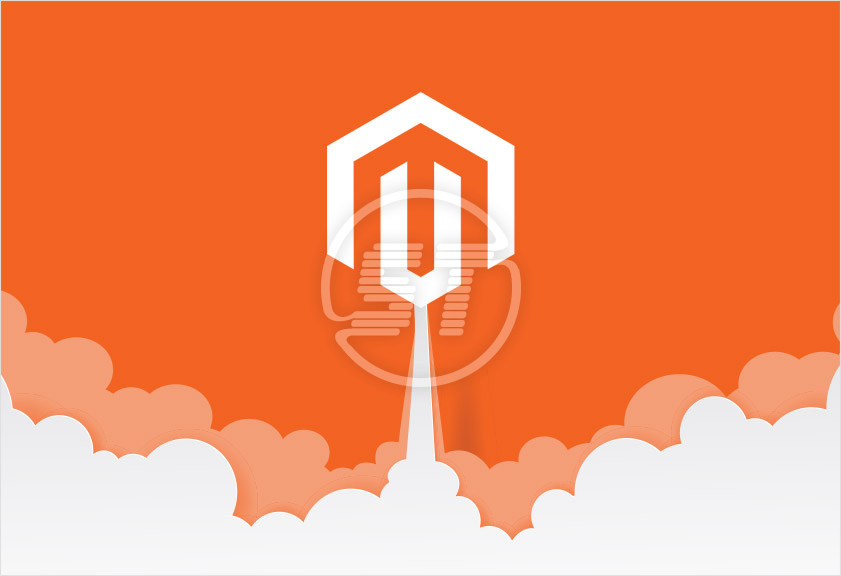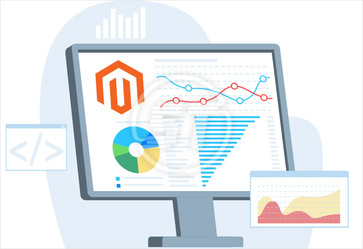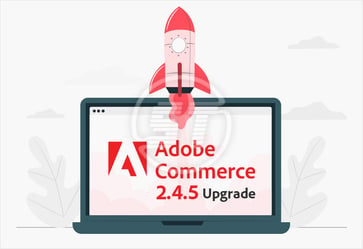Upgrading is a constant process. Technology needs continuous upgrades to evade the chances of performance glitches and security vulnerabilities. Magento or Adobe Commerce is no other; makers keep on releasing latest updates and patches to ensure competency and reliability of the platform and the latest upgraded minor version is 2.4.4.
Adobe Commerce/ Magento open-source version 2.4.4 was released in March 2022. The other versions 2.3 and 2.4.0 to 2.4.3 will reach their end of life soon in 2022 only. Thus, you have less time to upgrade to the latest version. This article will help you out with the latest updates and planning for Magento upgrades.
Primary reasons to upgrade your store to Magento 2.4.4
Adobe Commerce or Magento open-source has a wide array of exceptional features, sturdy marketplace extensions, infinite and out-of-the-box flexibility, and SaaS features. However, choosing the right technology is not enough, you ought to follow best practices for customization and keep upgrading the software to avoid unexpected maintenance expenses.
When you upgrade the software, you regain the power to stay nimble in the transforming ecommerce industry. Upgrading enables your platform to harmony with new features and improves the sales of your business. It also ensures that your store remains PCI-compliant, safe and performs exceptionally well even with a higher workload.
Security: It is one of the primary reasons to accept the Magento upgrades because most of the security issues happen with outdated versions of software. Adobe Commerce/Magento ensures the complete safety of your ecommerce platform and keeps on providing patch releases and security patch releases to mitigate the issues of security, quality, performance, and bugs.
Performance: Website performance is a key factor behind sales and conversion. The first few seconds of website loading time have a greater impact on conversion rate. Thus, take advantage of the latest updates since they ought to increase the loading time of the website and enhance the performance of your Magento website.
Cost of delay: When you do not perform the upgrading process regularly, it not only costs website performance issues or security risks but also increases the workload by accumulated technical debt. Regularly updated websites need less effort on minor version upgrades than the websites that get infrequent updates. Also, your third-party extensions can get affected with outdated versions.
Magento Upgrade Process
Adobe Commerce/ Magento open-source upgrade requires attention, planning and management to complete the process. There are three main facets of the upgrade journey and those are Project launch, Annual planning, and Implementation.
Project Launch: You ought to maintain your Magento website for the sake of your business. When you launch a new project, you put all your effort into its success. Similarly, you must focus on the maintenance of your existing website and keep updating it. You should plan and prepare for all the upcoming future upgrades to mitigate the last-minute chaos.
Annual Planning: Plan the annual budget and roadmaps as per the upcoming upgrade releases and your company needs. There can be chances that some of the extensions and customizations are not provided by Adobe natively, so they will not be part of upgrades. Similarly, review your business needs and decide what upgrades are necessary and all of which are not required. Planning will save you time and money.
Implementation: Upgrade implementation has five phases.
Upgrade analysis: You must analyze all the dependencies and future needs before you start the upgrade.
- Analyze the scope of target release to know the details about the upgrades.
- Analyze upgrade compatibility tool results to check the issues with existing codes by comparing them to the new versions’ code. The tool results give you detailed reports of the current version, latest version and the errors found in current version.
Analyze what services need to be upgraded to support target version. Such as,
- PHP – current version 7.2.33, upgrade it to 8.1
- Redis – current version 5.05, upgrade it to 6.0
- RabbitMQ – current version 3.7, upgrade it to 3.8
- MariaDB (Cloud) - current version 10.2.33, upgrade it to 10.4
- MySQL – current and updates version 8.0
- Composer – current version 1.9.2, upgrade it to 2.0
- Elasticsearch – current version 7.7, upgrade it to 7.10
- Analyze which modules and extensions need upgrades.
- Do not forget the analysis of upgrading custom modules.
- Dependencies and composer packages may need upgrade as well. You can join the Adobe Commerce Beta Program to avail yourself of the benefits of prompt access to upgraded codes. Thus, you will have enough time to complete the upgrade for all the future upgrades as well. Since 2.4.4 is already released, it will not benefit. But all future upgrades’ access will be easier after joining the programs.
Quality Assurance: Upgrade needs testing as well. Test the applied upgrades thoroughly before moving further.
User Acceptance Testing & Launch Preparations: This is the final step of upgrading, which you complete by reviewing and validating the site. Decide when to deploy and make plans for cron processes as well. Remember to inform your team and stakeholders about the changes for a successful launch of an upgraded website.
Launch: Deploy the upgraded website by following the best practices and ensure to test the critical path flows. Since the stakeholders are aware of the upgrade, they are trained enough to support the change. Ask your team to check and retrospect the pitfalls of the process to improve for the next upgrade.
Post Launch: Once the website is successfully launched, check the analytics data and other reports to know about the site’s performance and to ensure there are no unexpected issues.
Factors that impact the Magento upgrade process
There are some factors that affect the upgrade process of your Magento website. When you build a website, you must consider these variables to ensure smooth future upgrades.
For example, how you built your website? The more complex the structure, the more convoluted the upgrades process will be.
Do not skip new upgrade releases, it will increase your work of upgrading the website for each skipped release.
Upgrades also depend on what type of upgrade you are performing. If you are executing a minor upgrade (example: from Adobe Commerce 2.3.x to 2.4.0), it will be lengthier than upgrading the patch release (example: from Adobe Commerce 2.4.3 to 2.4.4). Security upgrades are much less time-consuming to implement.
Understand the scope of Magento upgrade
Before you apply for the upgrades, know the scope of the new release. They might include bug fixes, enhance functionalities or they impact third-party integrations and custom modules.
Backward incompatible changes: The backward incompatible changes include
- Major change highlights - Changes that have major impacts, and which need detailed explanation to ensure that third-party integrations will not stop working.
- Minor change reference - Minor changes reference document generated from the codebase to describe the changes about classes, APIs, dependency injection, interfaces, layouts, system and XSD.
Third-party extensions: Adobe Commerce marketplace new compatibility policy makes sure that every listed extension should be compatible with the latest upgrade release. Thus, you must take the extensions from Adobe’s marketplace.
Custom modules: Every custom module should be compatible with new upgrades. When you evaluate the custom modules, check the backward incompatible changes, and comply with new practices such as controller decomposition.
Upgrade compatibility tool: This tool is a command line tool, which finds out potential upgrade issues. This tool reduces the effort of your team to comprehend the scope and impact of an upgrade. It aids in eliminating common code issues and helps you find the correct path to resolve the upgrade issues.
You can download the tool using composer:
composer create-project magento/upgrade-compatibility-tool uct --repository
Some critical Magento upgrades
Upgrade modules and extensions:
- Download the updated file from Marketplace. Be careful about the module name and version.
- Export the contents to your Adobe Commerce root installation directory.
If a Composer package exists for module, run any one of the following
Update per module name:
composer update vendor/module-name
Update per version:
composer require vendor/module-name ^x.x.x
Run the following commands to upgrade, deploy, and clean the cache
bin/magento setup:upgrade --keep-generated
bin/magento setup:static-content:deploy
bin/magento cache:clean
Also, keep a note that Adobe eliminated all the vendor bundled extensions in 2.4.4. Vendors can support such extensions on Adobe Commerce Marketplace.
Patch upgrades: There are three types of patches and their upgrades.
- Hotfixes: These are the patches that Adobe publishes that contain high-impact security or quality fixes.
- Individual Patches: These fixes are for the most recently supported minor version upgrade.
- Custom Patches: These are the unofficial patches that you can create from git commit.
The patches can be applied with these 3 methods: Quality Patches Tool, Command line, and Composer.
How to perform a Magento upgrade of a git-based installation?
Any Magento developers who are contributing to the community can update Adobe Commerce without reinstalling it. Following are the steps to perform:
- Login to your server
- Switch to the file system owner
Change to the directory where you cloned the application
cd /var/www/magento2
- Save the changes you made to the composer.json file
Create a backup of your composer.json file
cp composer.json composer.json.old
Update the local repository to have the latest codes
git pull origin develop
- Diff and merge the composer.json.old file to composer.json file
Resolve dependencies and write precise version to composer.lock file
composer update
Update the database
bin/magento setup:upgrade
Clean the cache
bin/magento cache:clean
Troubleshooting
Once you are done with upgrading, troubleshooting is mandatory to check if the website is working properly or not.
You may get errors if the current search engine does not support the upgrades. The chances are either your search engine is set to MySQL, or it is set to Elasticsearch (which is no longer supported). If you receive such errors, your installation might be in an inconsistent state. You should return to your previous version while you resolve the issues.
If the module update fails, you can roll back to a previous version by clicking Rollback. It will recover your data even if you have not taken the backup.
Also, you can use the maintenance mode option to display to the users while you upgrade to the latest version.
Modernize your Magento store with Magento 2.4.4 or higher version
Magento 2.4.4 has more evolved capacities to engage your users. Adobe Commerce or Magento open-source new 2.4.4 or higher versions will keep you ahead in the industry race and future-proof your business.
- SaaS services will provide you with faster access to innovative features.
- You will have easier and more economical maintenance and upgrades.
- More flexibility and Magento customization capability to meet business needs.
- You will be able to scale the business at a faster pace.
- Better development experience with new tools.
- Integrating with other Adobe Experience Cloud applications will become easy.
So, upgrade to 2.4.4 (the latest version in 2022) and provide a modern and sturdy structure to your Magento store.
Wrapping it up
Magento itself is a reliable name and you have observed its impeccable performance for many years. Keep upgrading to its newer versions, like you upgrade your closet according to new fashion trends. Upgrading is necessary to stay competent, modern and to survive the new business trends.
Magento 2.4.4 will enhance your ecommerce business functionalities, which eventually increases the revenue and profits. So yes, it is worth upgrading your Magento store to the latest version!
Skynet Technologies is an official Adobe Bronze Solution Partner.
As a leading Magento development company in the USA, we specialize in full-service Magento ecommerce development including Magento solution architecture, UI/UX design, platform migration & upgrades, API / integrations, multi-vendor multi-channel marketplace, multi-tenant solution, performance optimization, Google core web vitals implementation, digital marketing, omnichannel strategy, Magento store ADA compliance & security, product information management solution, and more. Get in touch with us at hello@skynettechnologies.com or submit the following request free quote form to know more about Magento ecommerce development services.


